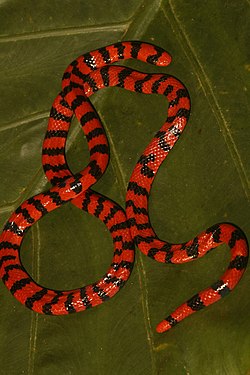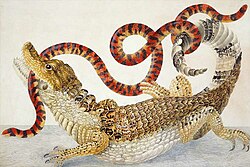| Anilius | |
|---|---|
 | |
| Scientific classification | |
| Kingdom: | Animalia |
| Phylum: | Chordata |
| Class: | Reptilia |
| Order: | Squamata |
| Suborder: | Serpentes |
| Infraorder: | Alethinophidia |
| Clade: | Amerophidia |
| Family: | Aniliidae Stejneger, 1907 |
| Genus: | Anilius Oken, 1816 |
| Species: | A. scytale |
| Binomial name | |
| Anilius scytale | |
 | |
| Synonyms | |
List
| |
The Aniliidae are a monotypic family [2] created for the monotypic genus Anilius [3] that contains the single species Anilius scytale. [4] Common names include the American pipe snake and false coral snake. [2] It is found in South America. This snake possesses a vestigial pelvic girdle that is visible as a pair of cloacal spurs. It is ovoviviparous. It is non-venomous, and its diet consists mainly of amphibians and other reptiles. Two subspecies are recognized, including the nominate subspecies described here. [4]
